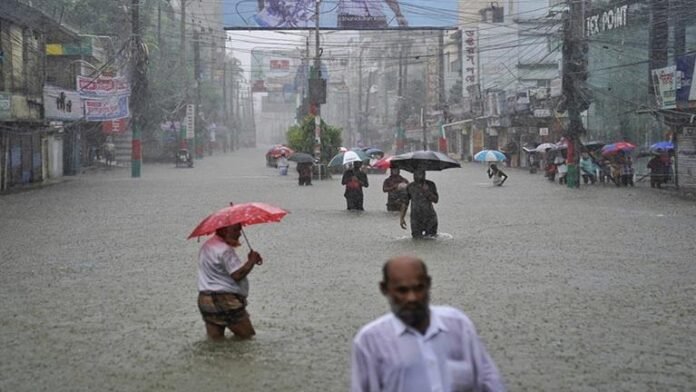Amid regional and environmental tensions, Bangladesh recently experienced catastrophic floods that displaced millions and destroyed vast areas of land. In the wake of this crisis, Bangladeshi citizens have accused India of intentionally opening its dams, causing the disaster. But what is the truth behind these accusations? Could there be another explanation for what happened?
"India Denies Allegations of Flooding Bangladesh: Nature or Negligence?" pic.twitter.com/CFkxJV2IBm
— Diplomatique.ma الدبلوماسية (@diplomatique_ma) August 23, 2024
The Flood: Result of a Political Decision or Natural Disaster?
Why is Bangladesh accusing India of flooding it? This question arises in the context of a long history of water-related conflicts between the two countries. Bangladesh heavily relies on rivers that originate in India, making it vulnerable to any changes in water flow. So, was India really trying to harm its neighbor, or were weather conditions the real cause?
India Responds: Heavy Rains or Strategic Decision?
In response to these accusations, India has strongly denied intentionally opening the dams to flood Bangladesh. The Indian Ministry of External Affairs stated that the floods in Bangladesh were caused by unexpected heavy rains, which led to an abnormal rise in river levels. But why are these accusations emerging at this particular time?
Geopolitical Analysis: Who Is Responsible?
India and Bangladesh share a long history of tense relations, particularly when it comes to sharing water resources. With these accusations escalating, the question arises: Is India exploiting its control over river sources for political gains? Could these floods be part of a larger strategy to exert pressure on Bangladesh?
"The Politics of Water: Investigating India's Role in Bangladesh's Devastating Floods" pic.twitter.com/uDKTftEbsG
— Diplomatique.ma الدبلوماسية (@diplomatique_ma) August 23, 2024
What Role Did Heavy Rains Play?
Scientific analysis of recent weather conditions indicates that the region indeed experienced torrential rains that exceeded normal levels, which could be the primary cause of the floods. But why does India insist on attributing the entire responsibility to the rains? Are there other undisclosed reasons?
Human and Economic Consequences
Regardless of the real cause of the floods, the consequences have been devastating. Millions of people in Bangladesh have been affected, losing their homes and livelihoods. But where is the international community’s intervention to provide aid? And how might this disaster impact future relations between the two countries?
Stop blaming India for the floods in Bangladesh! 😎 A dam located about 150 kms from the border released water after necessary warnings. Instead of addressing the real issues, some are busy tormenting Hindus! 😰 #FloodInBangladesh #StopTheBlameGame #Bangladesh pic.twitter.com/wyafPdBklt
— Ajitesh Tripathi (@0071Ajitesh) August 23, 2024
Conclusion
Between Bangladesh’s accusations and India’s responses, the truth remains unclear. What is certain is that water tensions between India and Bangladesh require lasting diplomatic solutions. Meanwhile, both countries must work together to mitigate the effects of natural disasters that threaten millions of lives.
Questions Raised:
- Have there been previous instances of such accusations between the two countries?
- What international mechanisms can be activated to investigate such crises?
- How can Bangladesh reduce its dependence on water resources originating from India?
- Is it possible to reach new agreements that ensure a more equitable distribution of water resources between the two countries?




